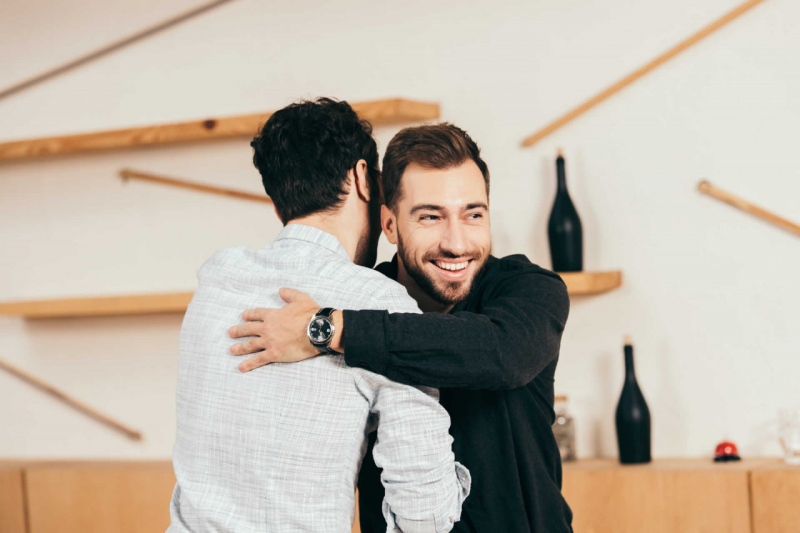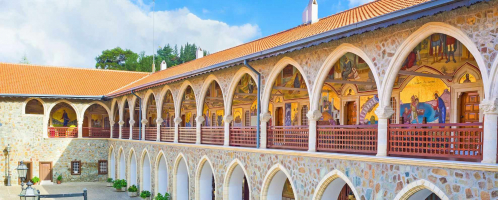Top 8 Serbia Culture, Customs, and Etiquette
Serbia is a land-locked country located on the Balkan Peninsula in Europe. Being on the crossroads of Balkan routes, Serbian culture has for centuries ... read more...preserved the identity and authenticity of Serbia and its people. Culture has always been an important part of Serbian identity; it has existed and survived during difficult historical periods. Let's take a look at the list of Serbia culture, customs, and etiquette.
-
Most people in Serbia eat three meals daily including breakfast, lunch, and dinner. Dining is not extremely formal in Serbia, and there are no strict eating rules. The main meal of the day is lunch, often eaten in the afternoon. Dinner often contains several courses, including soup, a main dish, and a dessert. Placing your cutlery together and leaving it on the plate indicates that you have finished eating.
It is customary for the host to pay when dining out. You may offer to contribute, but avoid asking to split the bill. You can express gratitude by offering to take your host out for a meal at a later date. When consuming alcohol, it is common for people to toast. They will raise their glasses, say ‘Živeli’ and look into the eyes of all the people they toast with. When you finish your drink, it will be refilled by someone else, so if you don’t want more to drink, just leave some liquid at the bottom of your glass.These are some of the Serbia culture, customs, and etiquette. Today the culture of Serbia is being more developed under the influence of the cultural legacy of the West, while, at the same time, striving to maintain the cultural uniqueness of this region.

nomadsunveiled.com 
willflyforfood.com -
Serbian traditional clothes take a very important place in the country's culture. There are many details that make them look more beautiful and richer. Every region of the country had different clothes. That way people could recognize from which region one person was from. In most Serbian villages, people wore flat shoes called Opanci. They were made from leather and had a belt that fastened around an ankle. Some of them had beaks, which represented some kind of decoration. Under these shoes, people wore woolen socks, usually black and with some colorful floral patterns which were authentic and original for every region.
Women and girls wore their hair in plaits. But the thing that differed the girl from a woman was that they didn’t wear a headkerchief or fez like women used to. There were also some hats that women used to wear from the day of their wedding until the end of their lives. They were called Trvelje. Men also wore hats. The most known and oldest type of hat is called Šubara. However, there is a hat known as ajkaa that was worn by soldiers and is also very well-known.
Men wore pants and shirts which were usually made from cotton and had small collars. They also wore some kind of vest, which is called Jelek, and a belt around their waist. Women’s clothes were more complex than men’s. They wore skirts and shirts or just dresses. Over those they wore a belt and an apron. Every part of their clothes was decorated and they also wore accessories. Women used to use much make up and they looked absolutely gorgeous. They used red lipstick, brown eye shadow, black eyeliner, black mascara and a blush.
theculturetrip.com 
baodantoc.com -
From the very moment a child is born, its parents spend a lot of time teaching them the importance of having good manners and etiquette. Expressing your gratitude in a simple and sophisticated way will set the tone of your conversation and help you get people’s respect. For instance, if you’re staying in Serbia and have a Serbian friend, learn a couple of new expressions. This will show your respect and acknowledgment of their culture and language. And what better way to do so than by expressing your sincere gratitude?
Similarly, if you’re wandering around Serbia and meeting the locals regularly, you will probably need some help with directions, recommendations, etc. Again, this is where your honest attempt to learn new words and expressions will go a long way, even if your pronunciation isn’t perfect. The locals will be delighted by your attempts and see it as a beautiful act of goodwill.
belgradelanguageschool.com 
belgradeatnight.com -
Serbians prefer direct communication styles. In general, they express their opinions and disagreements on an issue openly. Speaking loudly in conversation is common in Serbian culture because speaking softly is often misconstrued as a lack of self-assurance. Personal space in Serbia is smaller than in other cultures. Body language and facial expressions frequently reveal how a Serbian is feeling.
Greetings are also determined by centuries-old customs. Younger people should greet older ones first. Those who enter a home first extend greetings to those they find within. In addition to a spoken greeting, male persons greet others by taking their hats off. Relatives address each other by their terms of relationship, such as uncle, aunt, grandfather, grandmother, and so on.
Serbians are often openly emotional and rarely private. They enjoy talking and being heard. It is considered impolite not to give someone their full attention. Serbs are hospitable, sharing their lives with family, neighbors, and friends. Serbs dislike rowdy public behavior and prefer to blend in with the crowd.

serbonika.com 
serbonika.com -
Dating generally begins in the late teens. Young couples will participate in social activities such as going to cafes or restaurants or watching a movie or sporting event. Many Serbians tend to marry in their late twenties to early thirties. Divorce tends not to be stigmatized in Serbian society, in part due to the accepting attitudes towards divorce in the Serbian Orthodox Church.
A wedding ceremony may be performed by a clerk in a special office or by a priest in a church or home. Typically, couples choose to be married in the church in accordance with the Orthodox Christian tradition. After the wedding, a party is given to invited guests at home, in a restaurant or in some other suitable place. The bride and groom are dressed in their best clothes. In Serbian villages, weddings are big social events. A long procession of many vehicles usually follows the bride and groom to the church and back to the location where the banquet is held. The whole affair is joyous; much food and drink are consumed. Music is played and guests sing and dance for hours.

soletphotography.com 
soletphotography.com -
Serbia’s tipping culture has only really just arrived, and as a result, you’ll only really notice it in the major towns and in Belgrade. Because service charges aren't usually included in your final bill, it's up to you to decide how much to tip in bars and restaurants. If you thought the service was excellent, you can tip anywhere from 10% to 20% of your total bill in cash, but you don't have to if you didn't enjoy your time there.
You should be aware that if a band of musicians visits your table and you express your appreciation for their performance, they will hang around a little longer to see if a tip is forthcoming. It can be awkward if you aren't aware of it, so in this case, simply give them a small tip, however much you want to offer, and they will be grateful. They will then leave you alone!
Tour guides aren't typically expected to accept tips, but it's entirely up to you if you do. The same is true for taxi drivers, but if you want to tip, round up the fare to the nearest 100.
If you stay in a hotel and receive excellent service from porters and cleaning staff, you should consider tipping 100-500 RSD for every bag you have for porters, and a tip for the cleaning team. However, if you didn't think the service was up to par, don’t feel you necessarily need to do this.

sofiaadventures.com 
postsen.com -
Serbia's primary religion is Christian Orthodoxy. Besides the Christian Orthodox population, there are also other religious communities in Serbia: Islamic, Roman Catholic, Protestant, Jewish, and others. The religious diversity in Serbia has left its traces over the centuries as remarkable artistic and cultural masterpieces, erected in the most beautiful areas of Serbia, always impressively respecting and harmonizing with one another.
While the Serbian Orthodox Church is important to many Serbians, there are many people who hold alternative spiritual beliefs. Thus, beliefs derived from the Serbian Orthodox Church must be evaluated on an individual basis. In general, many older Serbians regard the church as an important part of their religious, social, and cultural lives.
Visits to one's local church during major holidays such as Christmas and Easter are common, regardless of spiritual beliefs. Serbian Orthodox churches are frequently filled with vibrantly painted icons, frescoes, and intricate wood carvings, as well as the scent of incense. Serbians follow the Julian calendar, which has Christmas on January 7th.

vogue.com 
theculturetrip.com -
In Serbia, no gifts are exchanged during initial business meetings. Consider gifting after establishing a long-term relationship with a business partner. If you are invited to a home, you may bring flowers for the lady host. You will bring a bottle of drink for your male host, usually rakija or wine - these are the most common. If you know what your host likes to drink, that’s what you’ll bring.
If there are children, you can bring them chocolate or sweets, but nowadays there are more and more conscious parents who don't like giving sugar to their children, so they will prefer to get fruit: voe - banane, jabuke, mandarine, or any other type of fruit. Fruit is another common gift given to a sick friend by Serbians. If you're going to see an ailing friend, bring a lot of fruit with you. If you're visiting elderly people, such as grandmas and grandpas, you can bring ratluk, a soft jelly confection dusted with powdered sugar and flavored, in addition to coffee and chocolate.

damascena.com 
mybaskets.ca





























